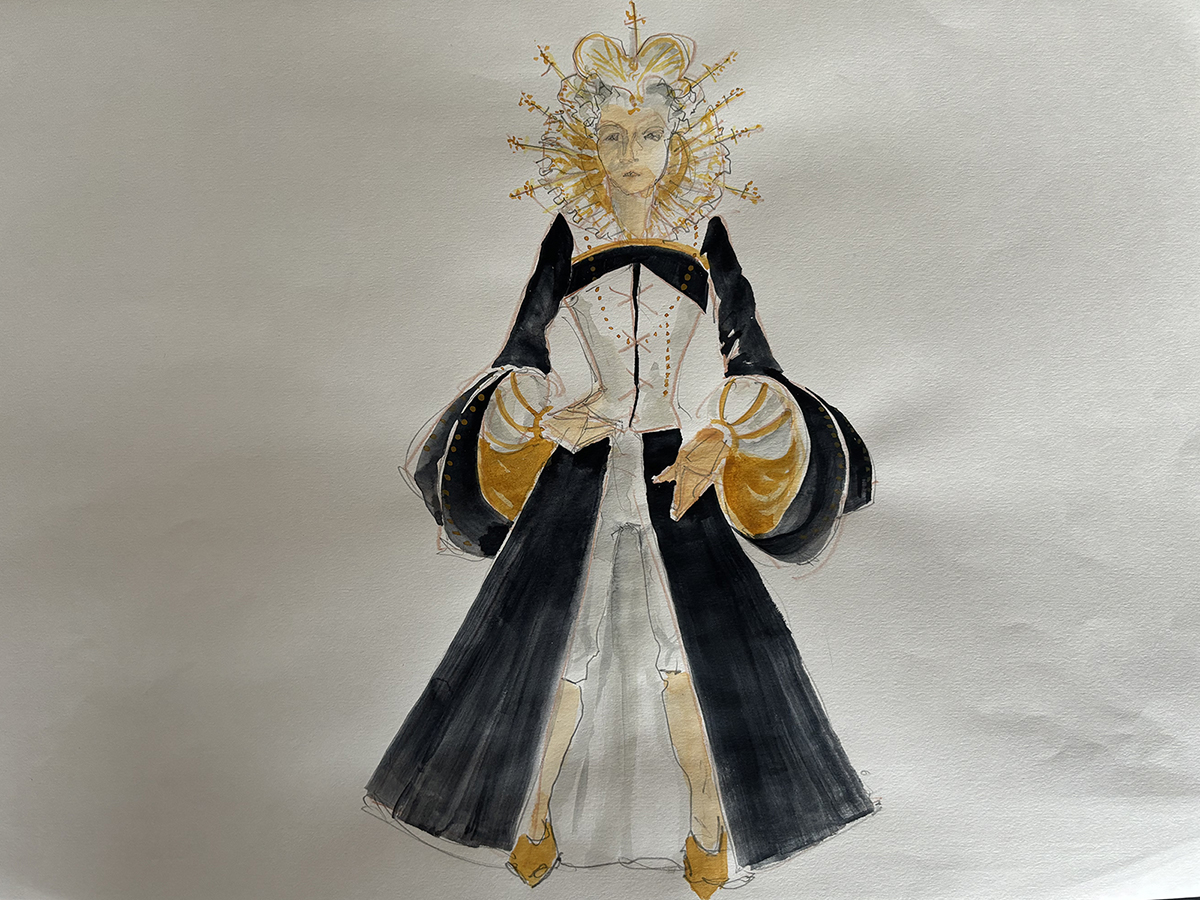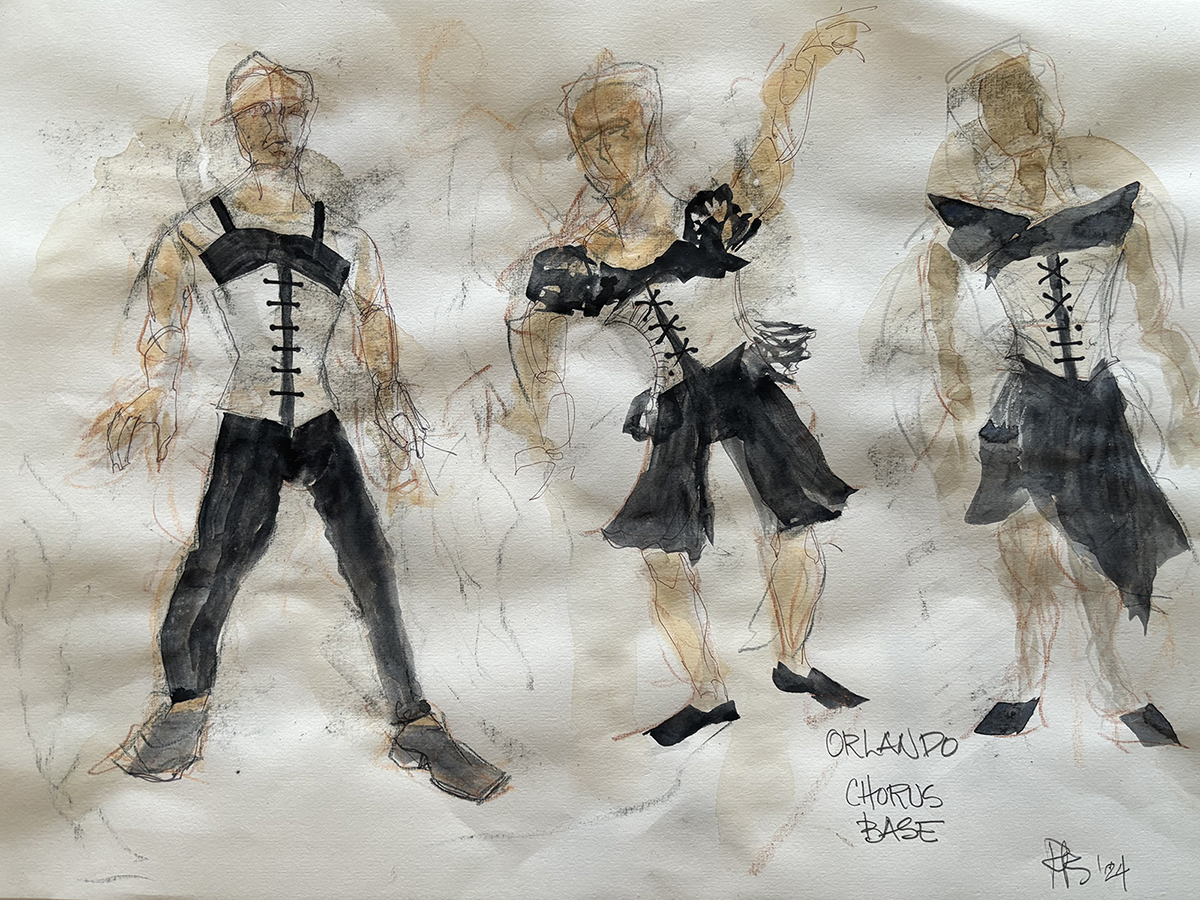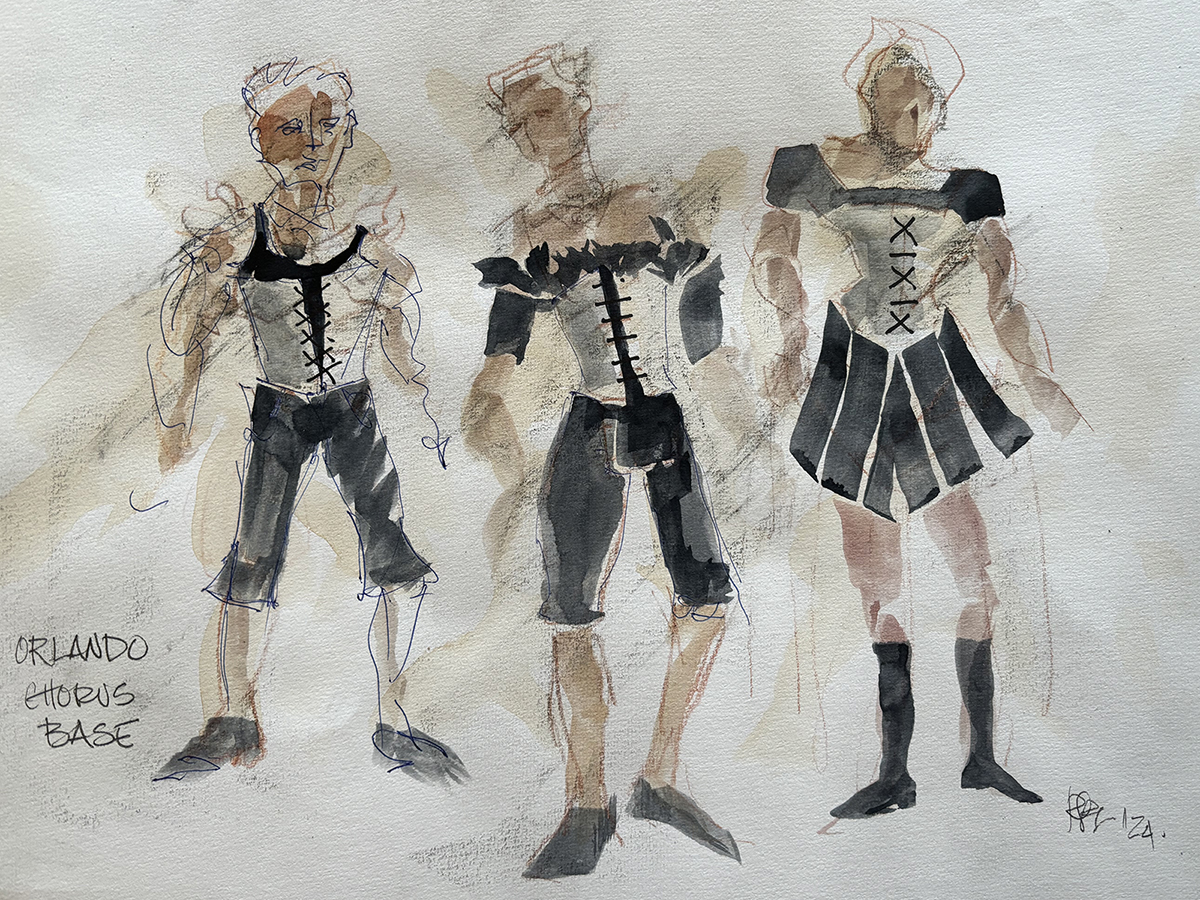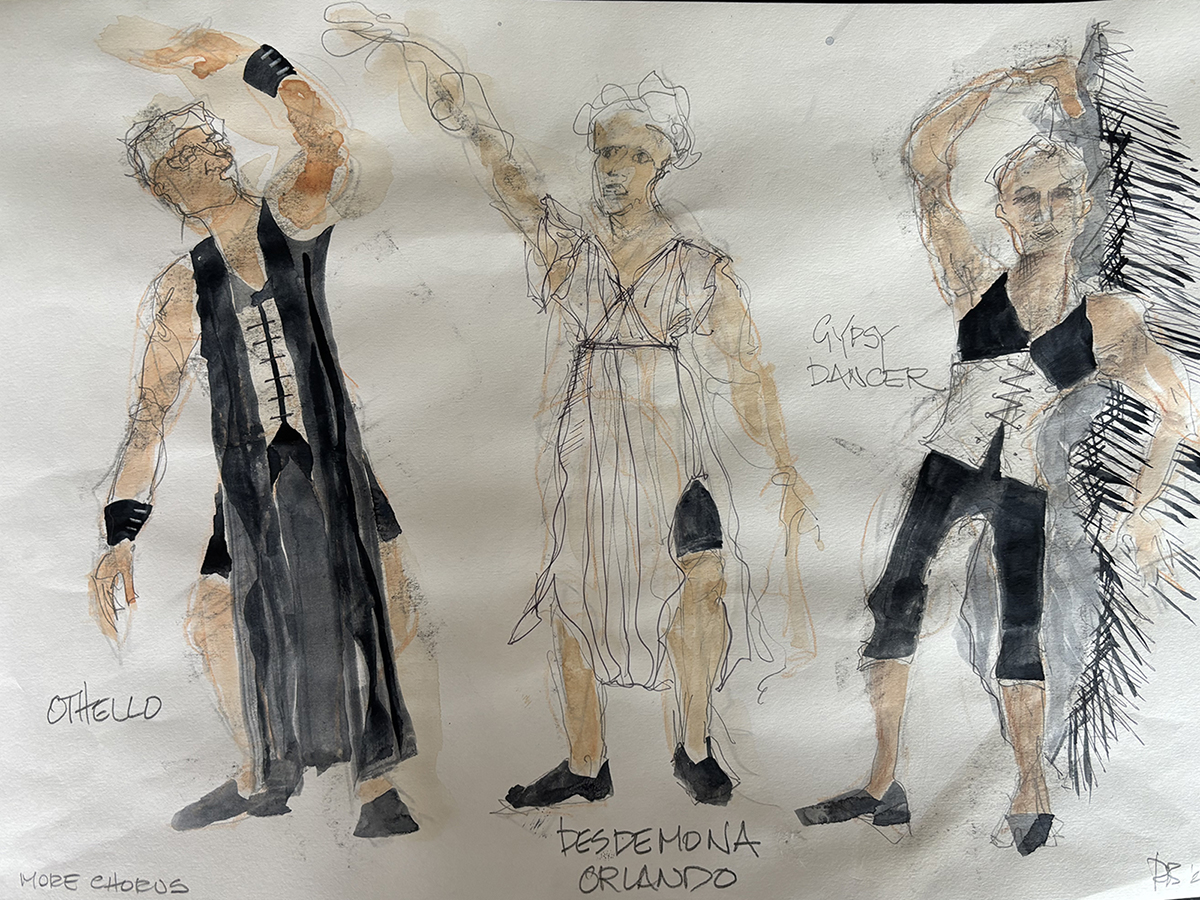Staging Orlando
Thoughts from the Director
Edited by Stanislav Tsybrukh; Costume renderings by Robert Shannon
Few people know a play as intimately as the director does, so here are some thoughts from Ron Jenkins on key aspects of bringing Orlando to life:
The play is adapted from the eponymous novel by Virginia Woolf. She was driven by her affection towards Vita Sackville-West, and the novel became a biography of someone Woolf loved, covering centuries from Vita’s perspective. It is a love story in its core—“the longest love letter.”

The first thing is to keep the heart of the novel and keep it alive in a fluid theatrical way. We decided the chorus should consist of six actors, which helps us fulfill that sense of fluidity. Because of this choice, the narration comes to life in the most theatrical way possible. The costumes also undergo constant change throughout five centuries of the play’s action.

Time is vital for a director—there is no story where time is unimportant. Usually, time is of the essence, but in Orlando time is endless. So, how do we make each interaction important and urgent?
The poem “Oak Tree” is the central image of the novel, the play, and the set. One of its main functions is keeping time while Orlando moves through time. Additionally, Orlando’s costumes help situate us in time as well. Paradoxically, sound is timeless in the production, however it supports the work, adds atmosphere, and through it, all the elements are well orchestrated.

Costume renderings by Robert Shannon: (top to bottom) The Queen; The Chorus 1; The Chorus 2; Othello Desdemona The Gypsy Dancer
Published October 2024